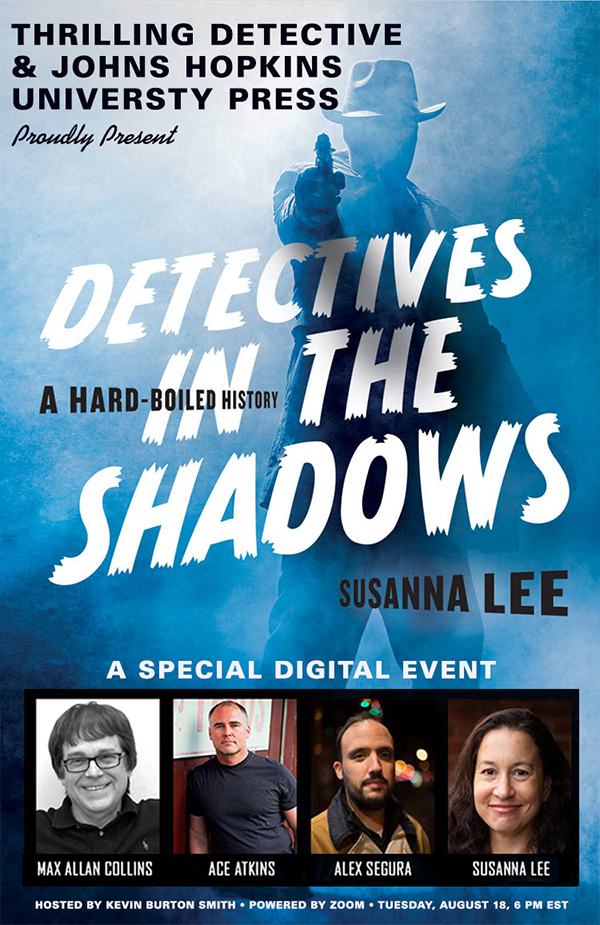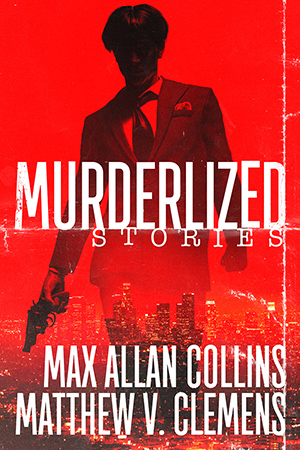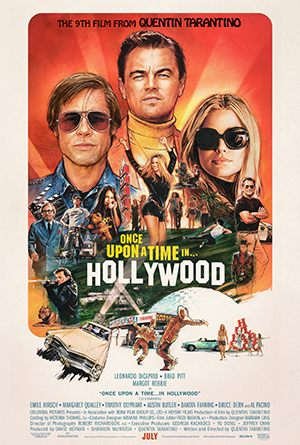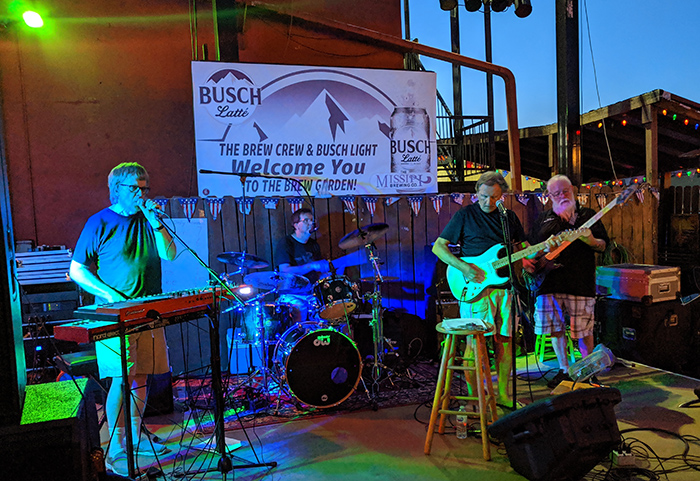Before I get into more edifying topics – “edifying” in the case of these updates being a euphemism for “self-serving” – I am going to carefully wade into a topic that may be viewed as political. And it is, admittedly…but in a nonpartisan way.
While I occasionally slip, I do my best here not to get into political territory, though I am something of an opinionated political junkie myself in real life. But I have seen several friendships I value become damaged if not ruined by the topic of President Trump. And I have valued business associates (who are also friends) who I would put at risk of alienating if I spoke my views. Finally, those of you who are good enough to check in here to listen to me babble are on the most basic level my customers (as Mickey Spillane used to say) and I don’t care to alienate those who help Barb and me keep the lights on around this joint.
But the situation with the United States Postal Service right now goes way beyond politics. It is a bipartisan problem and we all – all – should step up. It may be incompetence on the part of a postmaster with no background in the postal service; it may be something akin to sabotage, in which case it’s not at all well-thought out sabotage. If the mail is being slowed down on purpose, Republicans need to remember that in the past their party has benefitted far more from mail-in ballots than Democrats – the military, traditionally Republican-leaning to say the least, depends on mail-in ballots. (Mail-in ballots and absentee ballots – like the ones the President and the First Lady use in Florida – are essentially the same thing. Please don’t bother me with a diatribe about how they are not. Please do not write to tell me voting by mail leads to wide-spread fraud, because there is zero evidence to indicate that’s the case.)
This slowdown – which includes removing hundreds of high-speed mail-sorting machines, pulling mailboxes from street corners (public pressure has already addressed this…maybe), firing seasoned employees at all levels, curtailing overtime, and letting mail pile up – has an impact far beyond any misguided, wrongheaded attempt to suppress Democratic votes.
It impacts seniors like Barb and me, and veterans all around the country, from getting their meds in a timely manner. It slows social security checks. It slows down checks from employers (all of my checks come through the mail). It means credit card, rent, mortgage and other vital payments don’t get there on time. It means small businesses have difficulty getting their products to market. It means consumers (many house-bound now) who have to order various goods from home do not get them without a delay. It also means that goods arrive damaged (I have seen this happen personally – books, magazines, DVDs and Blu-rays coming mangled or crushed, over the past few weeks).
And, yes, in a pandemic, voters – particularly seniors like Barb and me – should have the ability to vote from home, by mail, with confidence that our votes will be counted.
What can you do?
E-mail your Senators. Your House representatives, too. It’s easy to use Google to get to them, even if you don’t know their names. Typing in “United States congress Muscatine, Iowa” got me right to Dave Loebsack of Iowa’s Second Congressional District. Typing in “Iowa United States Senator” got me right to Joni Ernst and Chuck Grassley (both apparently named at birth by the ghost of Charles Dickens). When you get to their web sites, you’ll find e-mail contact with them a breeze. Be polite. Don’t make bad parenthetical jokes about Charles Dickens. Let them know how your life, how you personally, are being impacted. Tell them you want the postmaster to rescind policies that he himself says have had “unanticipated consequences.” Tell them to properly fund the post office now. Let them think your vote might come their way if they show some responsibility on this issue.
I am delighted to report that Murderlized, a collection of short stories by my longtime collaborator Matthew V. Clemens and me, is available as a Kindle e-book from Wolfpack right now. The cover is fantastic, in my opinion. Matt digs it, too.
Wolfpack secured from me the rights to a number of my books, as you probably have noticed. The e-books are getting out there first, but you will be able to order physical books soon. The efficient wolves in the pack are working right now to get the four Eliot-Ness-in-Cleveland novels out in a two-volume (two-book-per) set of An Eliot Ness Mystery Omnibus. A single volume collecting Mommy and Mommy’s Day: A Suspense Duo is coming, too.
And Murderlized will soon be available as real book, too, as will everything of mine that Wolfpack is bringing out. I hope to be able to do my legendary Book Giveaways for all of these titles, as that occurs.
Murderlized is a massive collection of almost all of the short stories Matt and I have written together in the twenty or so years of our collaboration. (The only missing tales are a couple of licensed stories – one involving Hellboy, another set in the Buffy universe – that were problematic to include.) These are dark tales that fall in the realm of mystery/suspense, and several are overtly detective-oriented, with a few delving into outright horror. One thing Matt and I have done over the years, on occasion, is write the equivalent of a TV pilot – putting an idea for a book series on its feet by way of a short story. An unofficial CSI spin-off set in a Midwestern city is one example, and two horror stories in the X-Files vein represent recent attempts that may yet turn into novels. The series that Matt and I are doing for Wolfpack – which we’ll be revealing a little later – began with two short stories we wrote years ago (one of which appears in Murderlized…but no further hints).
As for the significance of the title, the namesake story has Moe Howard of the Three Stooges solving the murder of Ted Healy, the comedian for whom the stooges first stooged. It’s one of our favorites.
Matt and I go back a long way. I met him in the mid-‘80s when he came to book signings and Crusin’ band gigs, but really got to know him around 1987 at the Mississippi Valley Writers Conference, where I taught every summer for over twenty-five years. I encountered many promising and talented writers at the conference, and at least half a dozen nationally published novelists came out of my classes. I don’t take credit for that – not full credit, anyway – but several romance novels were dedicated to me, and it wasn’t for my Errol Flynn-like charms.
Matt was a familiar, positive presence at that conference, becoming a kind of host. He took my class several times, winning the John Locher Memorial Award. He also formed a friendship with the late Karl Largent, highly successful techno-thriller author, and began doing research and more for Karl, including presenting writing classes with him. I bought a story from Matt in 1993 for an anthology, and was impressed enough with his work to suggest we collaborate on a short story. That story, “A Pebble for Papa,” is included in Murderlized.
I began getting very busy with movie and TV tie-in work all through the ‘90s, doing numerous film novels and a pair of NYPD Blue novels. But when I was offered the CSI series, shortly after it began, I called Matt and asked if he’d seen the series (I hadn’t). He had. He’d done some research for me in the past, so I brought him on in that capacity and – since he knew the show – we co-plotted the first book. Quickly he got to know a number of cops locally and was bringing in just the kind of inside forensics info I needed.
I wound up having him develop a story treatment, with the scenes involving evidence and science fleshed out. Quickly that evolved into a collaboration where we plotted the books together, with him writing a story treatment (really a short rough draft), and me the final book. We did that for eight novels, and two CSI: Miami novels as well. We hit the USA Today bestseller list numerous times. More licensing poured in. I did several CSI video games alone, but brought Matt in to help on CSI: Miami. Together we wrote three CSI graphic novels and one CSI: New York graphic novel. We did a bunch of CSI jigsaw puzzles, too (short stories with the puzzle image including clues needed to solve the mystery). For five years we were the sole licensing writers for CSI and its spin-offs. For another two years we did the bulk of that work.
From this came the three Dark Angel novels and three Criminal Minds novels. (I should note that I wrote all of the movie novels alone.) At that point we wanted to break away as a tie-in team and write our own joint projects, which led to the two J.C. Harrow serial killer thrillers, You Can’t Stop Me and No One Will Hear You, followed by the thriller What Doesn’t Kill Her and the Reeder and Rogers political thrillers, Supreme Justice, Fate of the Union and Executive Order.
After my open heart surgery (among other medical fun and games), I stopped pursuing tie-in work other than Mike Hammer, and I of course already had a collaborator on those – the late Mickey Spillane. Matt and I wrote a few short stories during this period, but mostly I was working either alone (including the Krista Larson series) or with Barb (on the Antiques series).
Then Wolfpack came along, which seemed the perfect place for Collins and Clemens to get back to work together, and apart – I intend to do a Krista Larson novel for Wolfpack, and Matt and I will probably be doing a Reeder and Rogers for Wolfpack, as well. I say probably because we want to see where the country is politically after the coming election before diving back into those troubled, murky waters. Also, Matt is working on a solo western.
Wolfpack has been incredibly welcoming to me, and I am particularly grateful to have my short stories collected – the ones I’ve done with Matt in Murderlized, the ones I’ve done with Barb in Murder – His and Hers and the forthcoming Suspense – His and Hers, and the ones I wrote alone in Blue Christmas and the forthcoming Reincarnal.
But, of course, I need your support. If you buy e-books, you’ll find that Wolfpack will always have my material at a friendly price point (and often at sale prices). For those of you who – like me – prefer “physical media” (there must be a better way to use the English language), actual books of these titles are coming soon.
About once a week, my son Nate has been coming down the street, after getting his two kids to bed, to view a late-night movie with his old man. We tend toward Asian stuff, like classic Jackie Chan material and boxed sets of obscurities by great Japanese director Seijun Suzuki. Lately we’ve been delving into the Criterion Collection’s Blu-ray box set of Bruce Lee films, most recently Enter the Dragon.
Toward the beginning of the film, blaxploitation star Jim Kelly is pointlessly harassed by two racist cops who pull their vehicle up, hop out, and violently assault him (although it doesn’t work out well for them). Later Bruce Lee is told about a creepy rich guy who is a modern-day white slaver who has an attractive female mistress who recruits under-age girls and gets them addicted to drugs, then takes them to a sex island where they can service corrupt big wigs.
Nate looked at me and I looked at him.
“Not much has changed,” I said.
“Not much has changed,” he said.
Over the weekend I completed the second of three novellas for Neotext that introduce a new female detective character (about whom much more in the not too distance future, as the Mystery Science Theater theme puts it). I still have to re-read the manuscript for typos and inconsistencies and general tweaking.
But the beat goes on.
And FYI:
Proudly Present
DETECTIVES IN THE SHADOWS
A Hard-Boiled History

A special digital event about crime fiction’s hard-boiled history, featuring acclaimed and bestselling authors and celebrating the awesome new book by Susanna Lee.
WHEN: Tuesday, August 18, 2020. 6 p.m. EDT.
WHERE: Join us via Zoom at https://us02web.zoom.us/j/87153268756
More info: https://thrillingdetective.wordpress.com/2020/04/08/the-thrilling-detective-zoom/
Join a riveting online discussion on the past and present of hard-boiled crime fiction with leading crime fiction authors. Featuring Max Allan Collins (Road to Perdition), Ace Atkins (the Quinn Colson series), and Alex Segura (the Pete Fernandez series), the live event will celebrate the release of Susanna Lee’s new history of the genre, Detectives in the Shadows: A Hard-Boiled History. The event will be hosted via Zoom by Kevin Burton Smith of the Thrilling Detective Web Site and Johns Hopkins University Press.
America has had a love affair with the hard-boiled detective since the 1920s, when Prohibition called into question who really stood on the right and wrong side of the law. And nowhere did this hero shine more than in crime fiction. In Detectives in the Shadows, literary and cultural critic Susanna Lee tracks the evolution of this character type—from Race Williams to Philip Marlowe and from Mike Hammer to Jessica Jones.
In addition to being accomplished authors, everyone on the panel has a vast knowledge of the genre’s history. Enjoy a fascinating moderated discussion about crime fiction’s most iconic gumshoes and participate in a live Q&A with the panelists.
Here’s a radio interview Brad Schwartz and I did for our new Eliot Ness and the Mad Butcher.
And, for those of you sitting on the fence about whether or not to buy a copy, here’s a Crime Readers excerpt from that book.
Finally, here’s a fun career piece on the great Darren McGavin. The Mike Hammer material draws from (and credits) Jim Traylor and me for our book Mickey Spillane on Screen.
M.A.C.




